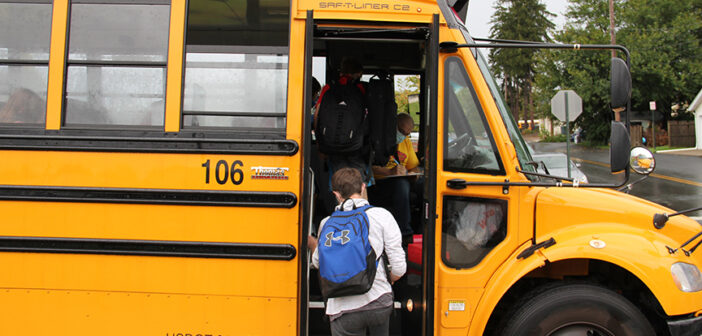Pennsylvania is in the midst of a school bus driver shortage. The Pennsylvania Department of Transportation (PennDOT), the Pennsylvania Department of Education (PDE) and the Pennsylvania School Bus Association (PBSA) are working together to address the shortage and secure more school bus drivers.
Diego Sandino, press officer for PennDOT, said there has been about a 4 percent decrease in school bus drivers over the last five years.
“Throughout the Commonwealth, we currently have a little over 42,000 school bus drivers, which is the lowest number of licensed CDL school bus drivers in the state that we have seen in the past five years,” Sandino said. “In 2017, we had about 44,000.”
PennDot and PDE issued a press release on Oct. 21 that detailed the bus driver shortage and how each organization plans to combat this issue.
According to the press release, PennDOT and PDE reached out to approximately 367,000 Commercial Driver’s License (CDL) drivers through mail starting Oct. 1 to connect interested drivers to school districts. The letter included a survey link for those who are interested in employment opportunities.
The press release stated that since the implementation of the survey, more than 1,300 individuals have expressed an interest in serving as school bus drivers.
There is an additional effort to recruit individuals without CDLs to become licensed drivers, according to the press release. Beginning Oct. 18, PennDOT temporarily opened CDL skills testing on Mondays with the hope that additional testing opportunities will allow more individuals to receive their CDLs.
Ryan Dellinger, executive director of the PBSA, said the process to obtain a CDL includes four different knowledge tests, a screening test and at least six hours of training behind the wheel and 14 hours of classroom training.
“It takes about 12 weeks to get a driver from brand new off the street to behind the wheel with kids,” Dellinger said.
Jenny Casebolt-Robinson, transportation general manager for Bethlehem Area School District, said BASD has felt the effects of the driver shortage. She said this has been an issue since before the pandemic.
“Here at BASD, we find ourselves being fairly equal in the number of routes and number of people we need to operate them,” Casebolt-Robinson said. “We’re able to maintain the staff that we need, not the staff number that we would like to have.”
She said BASD consistently runs roughly 95 routes and is currently transporting about 10,000 students.
As a member of PBSA, Casebolt-Robinson said working with the state has been an added benefit. She said she feels that the statewide effort to recruit more drivers is an effective strategy.
“That information that (PennDOT and PDE) gathered is just now trickling down to individual districts and bus operations,” Casebolt-Robinson said. “We’re starting to work through that list, but we did have a small number of people reach out to us directly through the district’s website based on those letters that were sent out.”
Casebolt-Robinson said she finds that the majority of BASD’s driver candidates are not CDL holders, but they can become CDL holders through BASD’s paid training program.
She said the training program provides candidates with the knowledge and skills they need to pass the CDL test at a PennDOT location.
“We take ownership of the entire training process,” Casebolt-Robinson said. “We take a person who’s never had any experience driving a bus, or working in a school district at all, perhaps, and take them from being a pre-hire candidate all the way through their pre-hire requirements.”
Dellinger said he recognizes the importance of school bus drivers in a child’s education.
He said that according to the American School Bus Association, students are 70 times more likely to reach school safely by bus than by car.
“School bus drivers are heroes,” Dellinger said. “And it is long overdue that we recognize them as such.”






Comment policy
Comments posted to The Brown and White website are reviewed by a moderator before being approved. Incendiary speech or harassing language, including comments targeted at individuals, may be deemed unacceptable and not published. Spam and other soliciting will also be declined.
The Brown and White also reserves the right to not publish entirely anonymous comments.